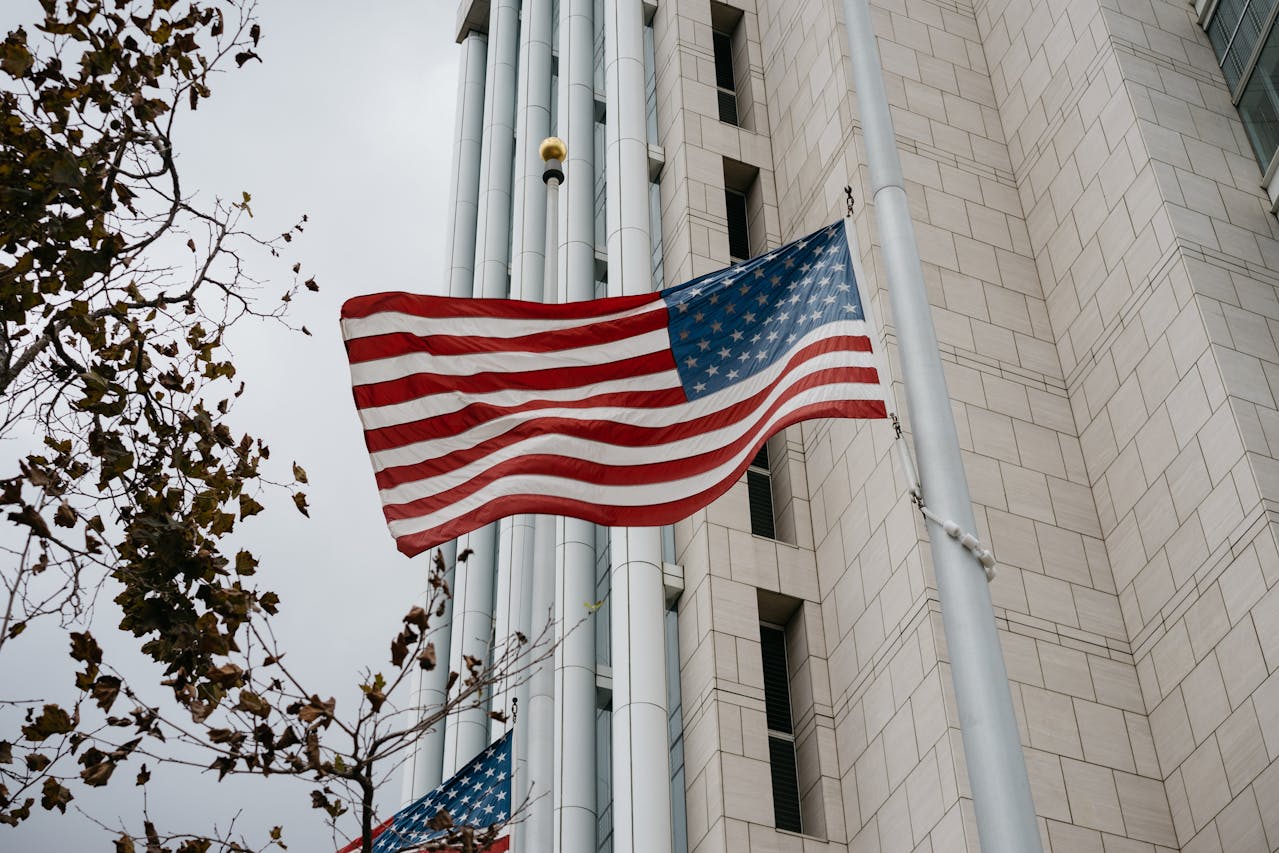Cannabis holds a paradoxical place in the United States. Federal law still groups it with heroin in the strictest category of controlled substances, even as storefront dispensaries operate openly from Los Angeles to New York. With Donald Trump signaling that he may support moving cannabis into a less restrictive category, the long standing divide between federal rules and state realities is back in sharp focus.
A shift in scheduling would not create nationwide legalization. It could, however, lower barriers for medical research, change how compliant businesses plan and pay taxes, and influence ongoing debates about criminal justice. It also reflects how public discussion has moved from zero tolerance to practicality, shaped by patient stories, evolving science, and the economic weight of a regulated market.

Whether this becomes a true inflection point or another pause in a complex national story remains to be seen. For patients and families, for researchers and clinicians, and for communities that have carried the costs of prohibition, the next steps will matter.
After weeks of speculation, there is now clear on the record confirmation that the White House is weighing a formal change to how federal law treats cannabis. At an August 11 briefing, President Trump said his team is “looking at reclassifying marijuana as a less dangerous drug” and that a decision could come “within the next couple of weeks,” while noting that no final call has been made.
To understand the stakes, it helps to look at how the system is structured. The Controlled Substances Act currently places marijuana in Schedule I, a category for substances with no currently accepted medical use and a high potential for abuse. Schedule III acknowledges accepted medical use and a lower potential for abuse. Moving from one schedule to another follows an administrative path. Agencies collect scientific evaluations, publish a proposed rule, invite public comment, and then issue a final decision.
If cannabis ultimately moves to Schedule III, the shift would stop short of nationwide legalization, yet it would carry practical effects. Clinical research would face fewer federal barriers. The tax treatment of licensed operators would change because Section 280E of the Internal Revenue Code applies to businesses that traffic in Schedule I or II substances, not Schedule III. That relief would begin only when a final rule is issued, which means current restrictions remain in place until the process concludes. Banking access would still depend on existing federal guidance and anti money laundering rules unless Congress or regulators revise them.
Politically, the moment is fluid. Analysts consider a move to Schedule III more plausible in the near term than full federal legalization, yet some conservative voices remain skeptical of any softening of federal rules. The administration is balancing public support for reform, industry expectations, and the legal limits of what rescheduling can accomplish without new legislation.
The Current Cannabis Map State by State
The national picture divides into four clear tiers. First is the adult use bloc, a set of states where adults 21 and over can legally purchase and possess cannabis under state law. That group includes Alaska, Arizona, California, Colorado, Connecticut, Delaware, Illinois, Maine, Maryland, Massachusetts, Michigan, Minnesota, Missouri, Montana, Nevada, New Jersey, New Mexico, New York, Ohio, Oregon, Rhode Island, Vermont, Virginia, and Washington. The experience is not identical everywhere. Virginia allows adult possession and home growing but still lacks statewide retail sales, Washington, D.C. permits possession and home cultivation but remains constrained on regulated sales, and Delaware crossed a milestone with the launch of adult use sales on August 1, 2025.
The second tier is medical only. These states authorize cannabis for patients who meet program criteria but have not approved adult use. That list includes Alabama, Arkansas, Florida, Hawaiʻi, Kentucky, Louisiana, Mississippi, Nebraska, New Hampshire, North Dakota, Oklahoma, Pennsylvania, South Dakota, Texas, Utah, and West Virginia. Nebraska is a recent addition after voters approved medical measures in 2024, and the state has been building the framework for access.

A third tier permits only limited products, typically low THC or CBD formulations for narrowly defined conditions. Those states are Georgia, Indiana, Iowa, North Carolina, South Carolina, Tennessee, Wisconsin, and Wyoming. Patients in these jurisdictions often face tighter caps on potency and fewer dispensary options, which is why these programs are treated differently from comprehensive medical systems. Kansas sits adjacent to this category. The state recognizes a legal defense for certain CBD possession but does not regulate in state production or sales, leaving patients without a full program.
One state remains a true holdout. Idaho has neither adult use nor a public medical program, a reminder that policy can look very different from one border to the next. Taken together, the trend line still points in one direction. Twenty four states have adult use laws on the books, forty states plus the District of Columbia authorize comprehensive medical access, and a shrinking group is navigating limited allowances or none at all.
The Levers and Roadblocks Shaping Cannabis Policy
Public opinion is no longer the bottleneck. Most Americans support legal access in some form, with broad comfort around medical use and growing acceptance of adult use. That shift explains why state reforms have advanced even while federal policy lagged. The political question is now about pace, scope, and safeguards.
The legal path for a federal shift already exists. Agencies have built a record that includes scientific evaluations, formal notices, and interpretations of what counts as accepted medical use. That foundation allows a rescheduling decision to move through an administrative process rather than wait for Congress. It shortens the runway but does not settle the outcome.
Money will drive momentum. Current federal tax rules have squeezed licensed operators and limited growth. If cannabis moves to a schedule that removes the tax constraint on ordinary business deductions, cash flow improves and more activity migrates into the regulated economy. Investors and multistate operators are modeling both scenarios so they can pivot when a final rule lands.
Banking and payments remain the stubborn chokepoint. Even with rescheduling, financial institutions will proceed cautiously until Congress or regulators update policy. Expect continued enhanced diligence and uneven access to services, which keeps operators conservative on expansion.
Courts are redrawing the map. Judges are striking down licensing rules that favor local residents or local convictions, signaling that constitutional limits still apply in cannabis markets. Programs designed for social equity will need to be rewritten to survive scrutiny, which may slow rollouts now but produce sturdier frameworks later.
Health and safety choices will set the ceiling. Rescheduling would open more doors for research, but states will still decide potency limits, packaging, labeling, and youth protections. Clear rules build trust with parents, patients, and public health voices. Trust sustains policy change, not just headlines.
Taken together, the near term path looks incremental but meaningful. A rescheduling decision would narrow the gap between federal rules and state markets, widen research access, and change the financial math for compliant businesses. It would not create a national retail system or remove the need for congressional action on banking and interstate commerce. What happens next will hinge on how agencies finalize rules, how courts define fair licensing, and whether lawmakers choose to harmonize the pieces.
The policy debate can feel abstract until it touches daily life. For many patients, cannabis is not a headline, it is a tool they hope will ease pain, improve sleep, or calm persistent nausea. For others, it is a product they might encounter at a concert, on a film set, or in wellness spaces that blur recreation and recovery. A CureJoy lens asks a simple question first. How do we keep people safe while the rules evolve.
Safety begins with clarity. Products vary widely in potency and onset, which means the same milligram label can feel very different depending on the form. Thoughtful use starts with small amounts, patient pacing, and a plan for when to stop. It continues with clean sourcing, certificates of analysis that confirm what is in the bottle, and honest conversations with clinicians about interactions, mental health history, and goals that can be measured rather than guessed.
Communities carry this story too. Parents need straightforward guidance for talking with teens about risk without shame. Employers and artists need practical guardrails that protect performance and public safety. Policymakers need standards that reduce harm, including packaging that does not mimic snacks, clear labeling, and strong youth protections. When those pieces line up, the conversation moves away from stigma and toward responsibility.
There is also a human balance worth naming. Relief matters, so does restraint. Avoid driving, avoid mixing with alcohol, store products securely at home, and pause if anxiety, palpitations, or confusion appear. Wellness is not about chasing more, it is about listening to the body, choosing less when less is enough, and seeking medical care when something feels off. In a changing landscape, that mindset protects people better than any slogan.
Federal signals may change the schedule, not the reality on the ground. State rules will still decide how people buy, use, and talk about cannabis. That means progress is likely to be incremental, with real benefits and real limits.
For readers and families, health comes first. Make decisions with your clinician, use products with verified lab results, and avoid driving or mixing with alcohol. If anxiety, chest pain, or confusion appear, stop and seek care.

For creators and brands, precision builds trust. Verify facts, follow platform and labeling rules, and keep claims inside medical guidance. Center safety, not hype. In a shifting landscape, clear choices protect people better than headlines ever will.












Leave a Reply